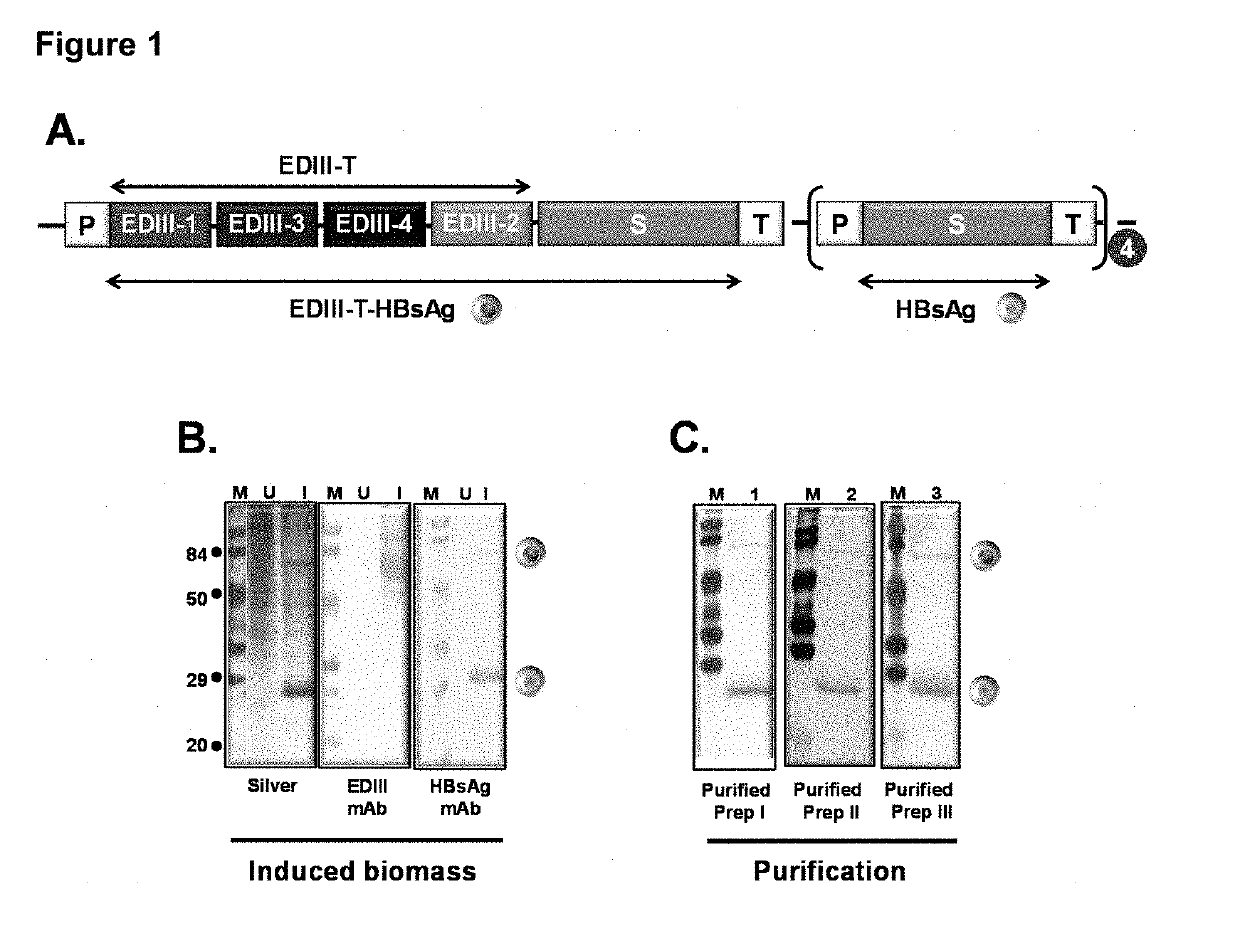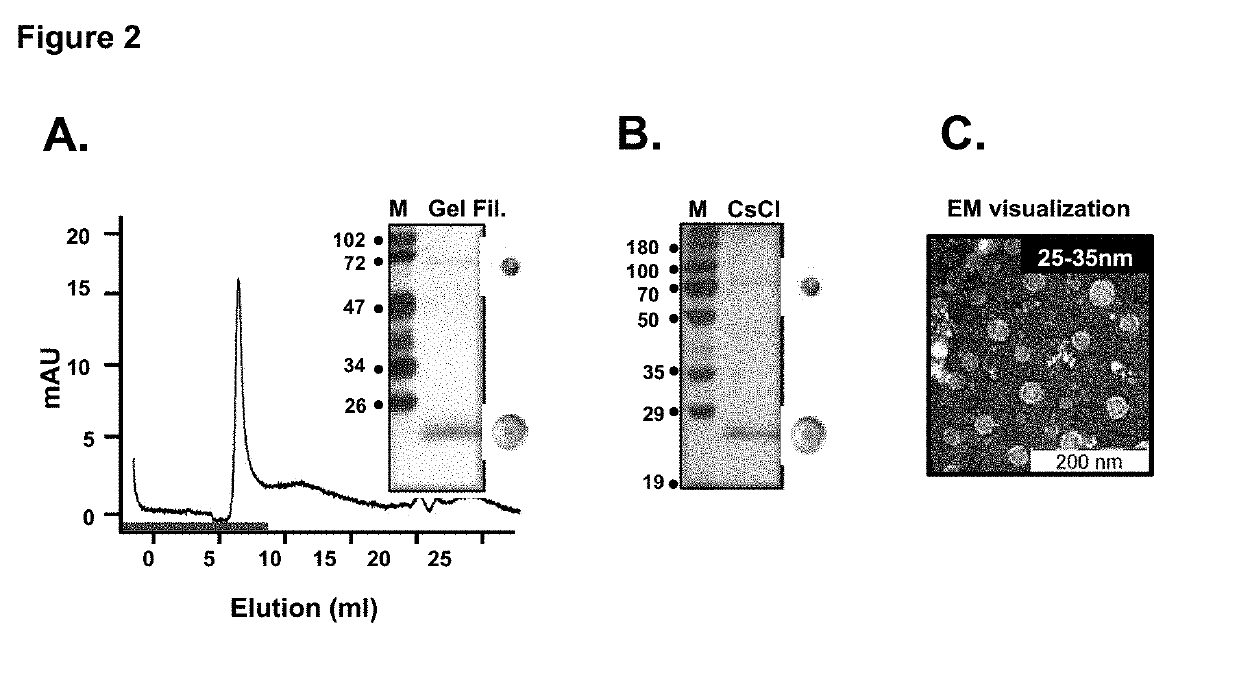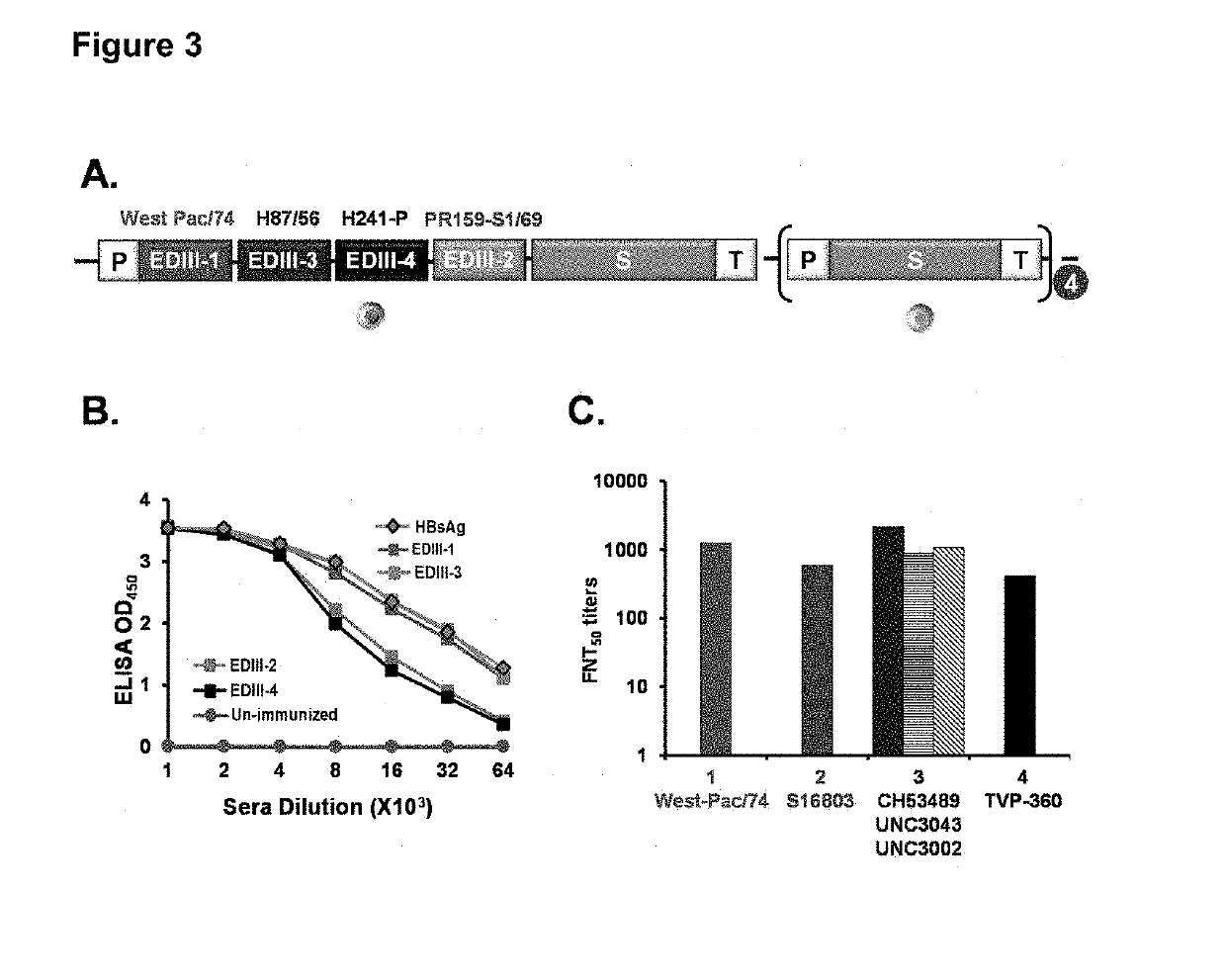Tetravalent dengue vaccine
a dengue subunit, tetravalent technology, applied in the direction of immunological disorders, antibody medical ingredients, peptide sources, etc., can solve the problems of no dengue vaccine licensed in the market, no vaccine on the market, and problems due to viral interference, etc., to achieve efficient and safe vaccination
- Summary
- Abstract
- Description
- Claims
- Application Information
AI Technical Summary
Benefits of technology
Problems solved by technology
Method used
Image
Examples
example 1
Construction of Recombinant VLP-Based Dengue Quadrivalent Vaccine Candidate
[0073]EDIII-T was cloned in fusion with HBsAg and in a background of four expression cassettes of HBsAg in P. pastoris vector as depicted in FIG. 1A. This design of EDIII-T and HBsAg is termed as “DSV4”. The recombinant plasmid was electroporated in P. pastoris and the colonies were screened for the co-expression of EDIII-T-HBsAg and HBsAg proteins by methanol induction of clones.
example 2
Characterization of Dengue Quadrivalent Vaccine Candidate-DSV4
[0074]One of the positive clones co-expressing the two proteins as shown in FIG. 1B, was selected for further study. Induced biomass was lysed and the proteins associated with the membrane were extracted and subjected to diafiltration through 300 kDa membrane. This step was designed to allow enrichment of large sized protein considering that the two co-expressed proteins assemble into DSV4 VLPs. The retentate was purified through phenyl 600M resin with high purity as depicted in FIG. 1C.
example 3
Identification and Characterization of VLPs
[0075]Ability of the co-expressed proteins to assemble into VLPs was evaluated through gel filtration as shown in FIG. 2A, CsCl Ultra-centrifugation as shown in FIG. 2B and electron microscopy as shown in FIG. 2C. It was observed that both the protein components of DSV4 eluted together in the void volume during gel filtration as shown in FIG. 2A and co-migrated during CsCl ultra-centrifugation as shown in FIG. 2B. On visualization under electron microscope, they were observed to assemble into 25-35 nm VLPs as shown in FIG. 2C.
PUM
 Login to View More
Login to View More Abstract
Description
Claims
Application Information
 Login to View More
Login to View More - R&D
- Intellectual Property
- Life Sciences
- Materials
- Tech Scout
- Unparalleled Data Quality
- Higher Quality Content
- 60% Fewer Hallucinations
Browse by: Latest US Patents, China's latest patents, Technical Efficacy Thesaurus, Application Domain, Technology Topic, Popular Technical Reports.
© 2025 PatSnap. All rights reserved.Legal|Privacy policy|Modern Slavery Act Transparency Statement|Sitemap|About US| Contact US: help@patsnap.com



